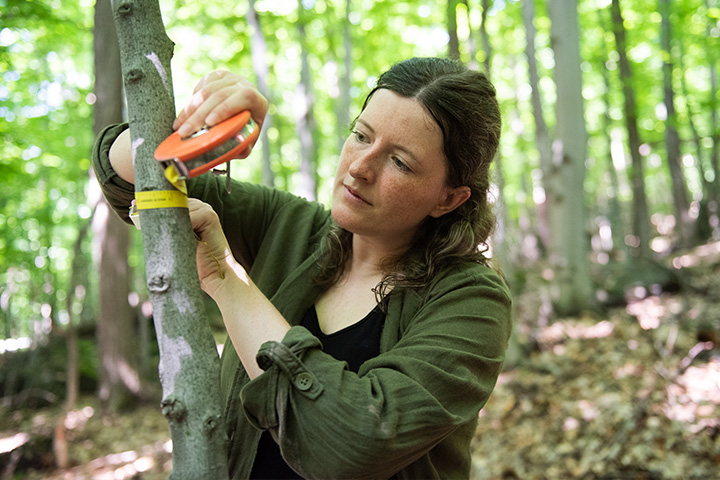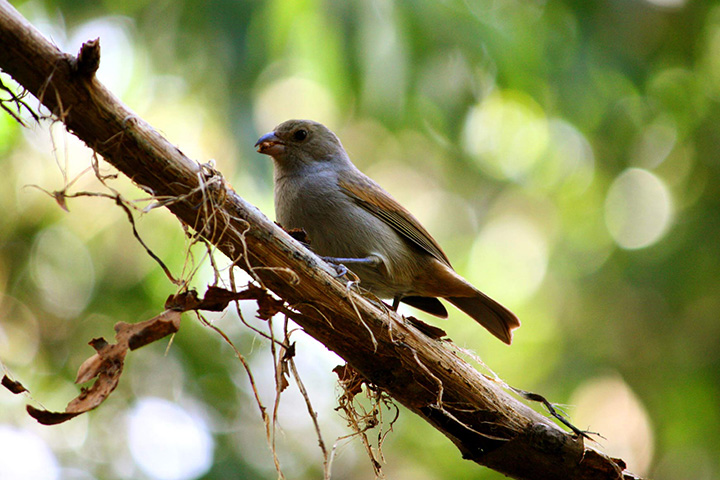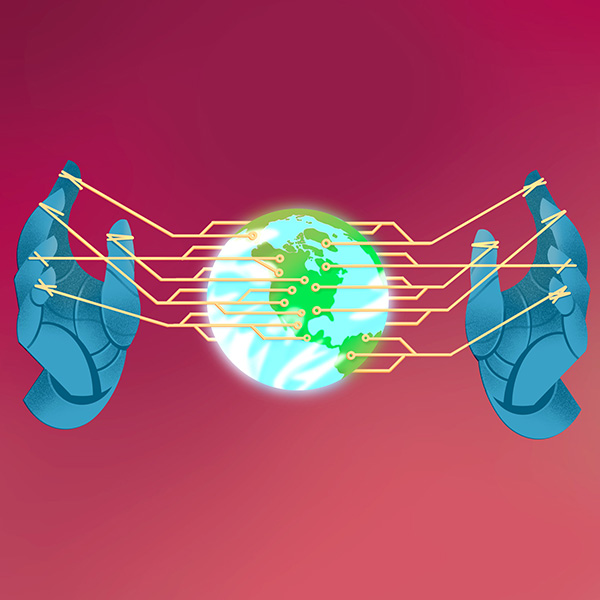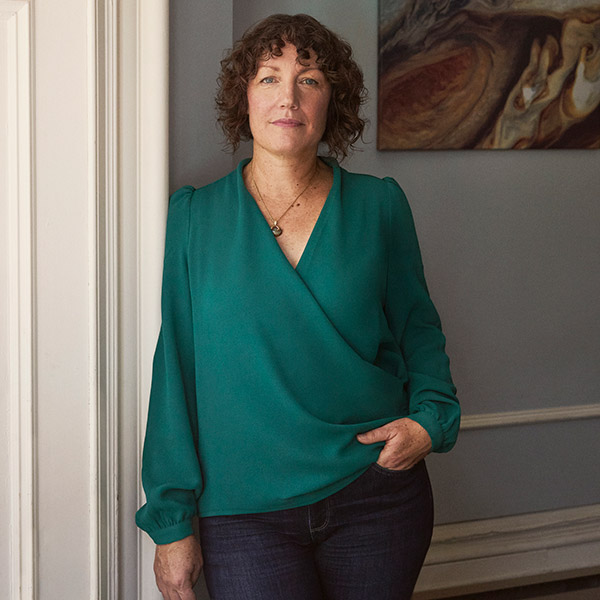When she arrived at McGill in 2003 as a post-doctoral fellow, Virginie Millien found herself at the Redpath Museum. With her background in geology and paleontology, “I felt at home in the museum collection.”
Millien served as the Redpath’s curator of paleontology in 2005 and curator of natural sciences from 2006 to 2008. She credits the museum’s extensive collections with inspiring her to pursue research out in the field. It was a collection of mice gathered from Mont St-Hilaire in the 1950s that really captured her attention.
“I thought – someone has to go back [to Mont St-Hilaire] and see if it’s still the same,” recalls Millien, now an associate professor in the Department of Biology whose research examines the effects of environmental change on biodiversity. “That’s exactly what I did!”

Her work has demonstrated that the mice of Mont St-Hilaire have indeed experienced some noteworthy physical changes over the decades, evidence, perhaps, of a shift in diet related to climate change.
Over the past 20 years, Millien has added many new mammal specimens from the area to the Redpath’s collections. “So, if another researcher comes along in 100 years and says, I’m going to check this out – that would be amazing.”
Exploring ‘our backyard’
“It’s our backyard,” says Millien of the Gault Nature Reserve, where she has taught and researched for many years, and where she served as director from 2017 to 2018.
Located 40 kilometers east of Montreal, the reserve in Mont St-Hilaire protects more than 1,000 hectares of natural habitats, including 25 kilometers of trails open to the public all year. The land was bequeathed to McGill in 1958 from the estate of Brigadier Andrew Gault to preserve “his most treasured possession … for all time to come.”
The mountain and its surroundings are a UNESCO Biosphere Reserve – the designation means that the UN agency recognizes Gault as a “learning place for sustainable development.” Field research in the area dates as far back as 1859, when scientific pioneers such as Sir John W. Dawson, T. Sterry Hunt, and Brother Marie-Victorin explored the pristine forests.
Today, Gault continues to be a hub for everything from student field trips to long-running scientific research to public events – like one held on April 8, when the region fell under the shadow of a total solar eclipse.
“The Gault staff and interpreters do a phenomenal job of educating ordinary citizens,” says Nigel Roulet, Distinguished James McGill Professor of Biogeosciences and chair of the Department of Geography.
“I don’t know how any human being can go to Mont St-Hilaire, walk through the woods, and not feel some restoration.”
Nigel Roulet, Distinguished James McGill Professor of Biogeosciences
Based at Gault and across the province, Roulet’s research focuses on the interaction of climate, hydrology, and ecosystems, including the study of stream chemistry. “I do a lot of research now on greenhouse gases,” says Roulet.
Many departments at McGill use Gault as “a living laboratory,” says Roulet. The main offering for geography students is a field course in the spring. “Students live on the mountain and learn field techniques that a typical geographer would use, related to vegetation, soils, weather, and hydrology, for example,” says Roulet.
He notes the key advantage of the Gault Nature Reserve is the fact it’s been protected under the stewardship of the University for many decades. “It has remained in a relatively natural form. It’s a fantastic place to do our work.”
A tropical brain trust
Although she began her research at Mont St-Hilaire, Virginie Millien is now spending a lot of time in Barbados.
Located in Holetown, Barbados, the Bellairs Research Institute is Canada’s only teaching and research facility in the tropics. Founded in 1954 by an endowment from Commander Carlyon W. Bellairs, this McGill-owned field station maintains an open-door policy to all researchers with academic interests in tropical terrestrial and marine environments.
In 2021, Millien took on the role of academic director of the Barbados Field Semester Program at Bellairs. She had gone on a site visit in 2017 and “fell in love with the place,” she recalls. She spent two years travelling in the area and connecting with faculty members at the University of the West Indies (UWI).
From those collaborations, she devised a new field program that explores sustainable development in the Caribbean. The program consists of four courses over a full semester, designed for students “to get out there and see how people do things differently,” says Millien.
With students enrolled from both McGill and UWI, the program was offered for the first time last year. It runs from September to December and is open to undergraduates from all faculties. This March, students from Barbados travelled to Montreal to present their posters alongside their McGill counterparts.
Millien notes that Bellairs is open year-round for scientists across a range of disciplines – everything from mathematics to computer science to marine biology. “We are all studying these large-scale patterns, like climate change,” she says, adding: “You feel the energy when you’re there – the thinking in the workshops is incredible!”
Going to the birds?
Louis Lefebvre arrived at Bellairs some 30 years ago, in search of an intelligent bird.
“I was doing field research on city pigeons around the McGill campus,” says Lefebvre, a professor emeritus of biology and an expert on learning behaviours in birds. “I was told there was a dove that was a perfect match [for my work] in Barbados.”
Turned out the dove was not particularly interesting. Instead, Lefebvre became fascinated with the grackles and bullfinches on the island nation. These birds exhibited some interesting behaviours, thanks, in part, to their proximity to humans. “These birds are incredibly innovative, because they are not afraid of you.”

He notes that Barbados is an ideal location for his research on animal intelligence. “Barbados is an island with very few bird species,” says Lefebvre. “It’s also been colonized, so there are people everywhere.” As a result, the birds in Barbados have developed innovative ways to adapt to an island environment that’s quite different from the continent, and they have been unencumbered by competition from other bird species.
“They’ll go to your dinner table, grab sugar packets, bring them back to their territory – and eat the crystals as if they were nectar from flowers,” says Lefebvre. He has observed Barbados blackbirds stealing dry food intended for dogs and cats, and then dipping the pellets in water to soften them up for eating. He’s seen a kingbird skillfully hunting tiny fish as they flipped between puddles on a beach.
“So, basically, my whole research program is about innovation in birds,” says Lefebvre. “And it was Barbados that suggested that to me.” The more innovative the birds, he notes, the greater their chances of surviving in our changing environments.
Lefebvre recently published a nonfiction book for the general public that deals largely with his work in Barbados, Têtes de linotte?: Innovation et intelligence chez les oiseaux.
“It’s selling like hot cakes,” says Lefebvre. Will there be an English-language translation? He hopes so.
Life-changing experiences
According to Dean of Science Bruce Lennox, McGill’s research stations and field experiences play an important role in setting the University apart from other institutions. “We wouldn’t be McGill if we didn’t give students these opportunities.”
In addition to Gault and Bellairs, there’s the Morgan Arboretum in Sainte-Anne-de-Bellevue, the Wilder and Helen Penfield Nature Conservancy on Lake Memphremagog, the McGill Sub-Arctic Research Station (MSARS) in Schefferville, and the McGill Arctic Research Station (MARS) on Central Axel Heiberg Island in the Canadian High Arctic.
Established in 1960, MARS is the most northern academic research station in the world. Besides McGill, recent users have included other universities, the Polar Continental Shelf Project, the Geological Survey of Canada, and the Canadian Museum of Nature.
The MARS acronym is appropriate in more ways than one. NASA and the Canadian Space Agency have had an interest in the area as an analogue of sorts for the planet Mars, and McGill scientists have explored how microbial forms of life have survived in the region facing harsh conditions not dissimilar to what might have once existed on the red planet. McGill researchers are in the process of proposing a large-scale, interdisciplinary research station at the MARS location.
In addition to its physical research stations, McGill offers popular, long-running field experiences in Panama and East Africa, open to students from all faculties.
“These experiences aren’t luxuries – they are necessities,” says Lennox. Whenever he speaks with students and alumni, the time they spent working and researching in the real world is often the focus of the conversation.
“Almost everyone says this was the defining experience of their McGill education,” says Lennox. “Almost everyone says it was life changing.”


